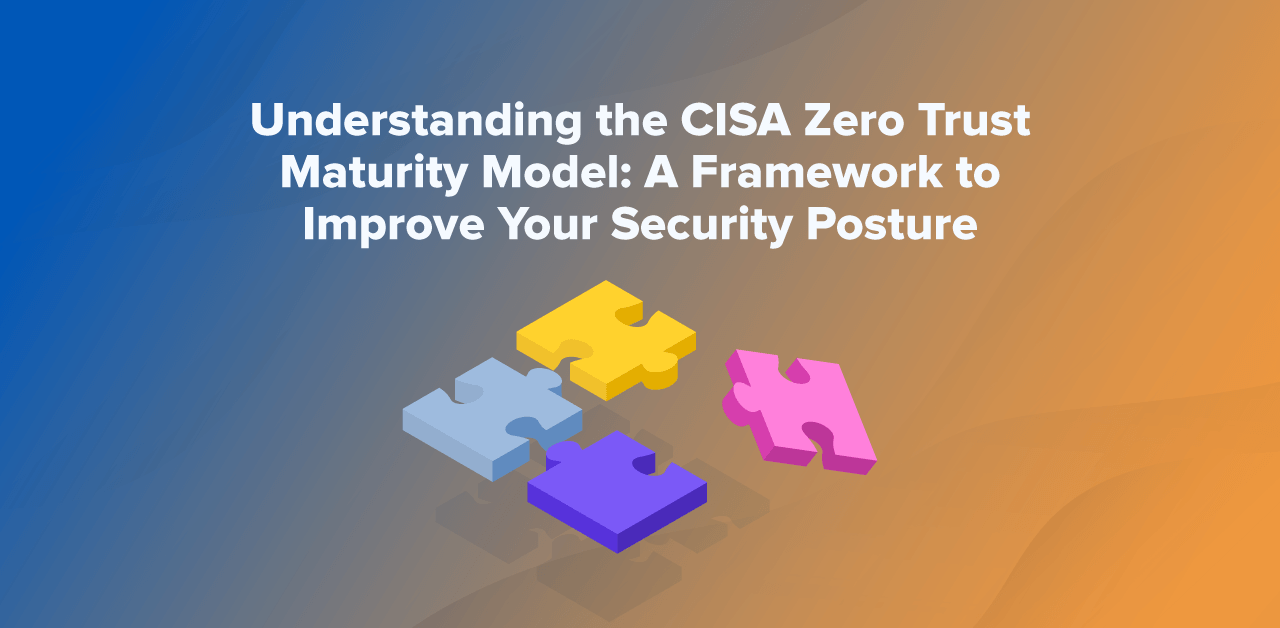In this article, we’ll provide a high-level overview of the CISA Zero Trust Maturity Model, the recent changes made in version 2.0, and how it can benefit your organization.
TL;DR
- The CISA Maturity Model is a voluntary framework you can use as a roadmap for evaluating and improving your security posture.
- There are five levels of cybersecurity ‘maturity’ outlined by CISA: Partial, Risk-Informed, Repeatable, Adaptive, and Risk-Optimized. Knowing what ‘level’ your organization falls into is valuable insight.
- By implementing this framework, you can identify weaknesses and assess your cybersecurity capabilities using a standardized framework.
- Version 2.0, released in April 2023, now covers a broader range of cybersecurity domains, including identity and access management, supply chain risk management, and vulnerability management.
- Agilicus can help you align with this framework while empowering your workforce with simple, secure access for all your users through Zero Trust.
As an IT leader, there’s a lot of responsibility on your shoulders to protect your critical systems against cyber attacks.
You need to protect sensitive data, meet specific cyber insurance requirements, and reduce risk.
No pressure.
Thankfully, there are already several different frameworks available to use as a roadmap for evaluating and improving your security posture.
In this blog post, we will delve into the CISA Maturity Model in particular, how it can benefit your organization, and how it compares to its predecessor.
What is the CISA Maturity Model?
The CISA Maturity Model is the federal government’s answer to the increasing number of cyber threats and risks. It is a voluntary guideline developed by the Cybersecurity and Infrastructure Security Agency (CISA) to help organizations evaluate and improve their cybersecurity posture.
In it, CISA outlines five different levels of ‘maturity’:
- Level 1 – Partial: At this level, the organization has limited awareness of its cybersecurity risks and has not implemented any formal cybersecurity practices.
- Level 2 – Risk-Informed: At this level, the organization has started to identify its cybersecurity risks and has established some basic cybersecurity practices.
- Level 3 – Repeatable: At this level, the organization has established a formal cybersecurity program and has implemented a set of standard cybersecurity practices that are consistently applied across the organization.
- Level 4 – Adaptive: At this level, the organization has established a dynamic and flexible cybersecurity program that can respond to changes in the threat landscape and business environment.
- Level 5 – Risk-Optimized: At this level, the organization has fully integrated cybersecurity into its overall risk management strategy and is continuously monitoring and improving its cybersecurity posture.
Why Should You Use It?
There are many advantages of the CISA Maturity Model:
- By using this model, your organization can identify and address weaknesses in your cybersecurity program. This can lead to a more robust security posture that can better protect against cyber threats.
- It also provides a standardized framework for assessing your cybersecurity capabilities. This can help organizations benchmark their cybersecurity program against industry standards and identify areas for improvement.
- The maturity model is a voluntary guideline, which means you can choose to adopt only the components that are relevant to your needs. This can make it an effective and flexible solution.
- Finally, it aligns well with other cybersecurity frameworks and regulations, such as the NIST Cybersecurity Framework, the EU General Data Protection Regulation (GDPR), and ISO 27001. By implementing the CISA Maturity Model, organizations can better meet regulatory requirements.
What Changes Were Made in Version 2.0?
CISA Maturity Model Version 2.0 builds on the previous CISA Cybersecurity Framework, which was initially released in 2021. The new version includes several updates and improvements, including:
- Notably, it now covers a broader range of cybersecurity domains, including identity and access management, supply chain risk management, and vulnerability management.
- Version 2.0 provides more detailed guidance on how to implement the framework, including how to measure cybersecurity maturity and develop a roadmap for improvement.
- It provides more flexibility for organizations to tailor the framework to their specific business needs.
- The CISA Maturity Model 2.0 places a greater emphasis on risk management, including identifying and mitigating cyber risks and developing a risk management strategy.
Conclusion
By understanding the CISA Maturity Model and how it can help your organization, you can decide if it’s the right framework for your team to align with.
But unfortunately, implementing a Zero Trust Architecture to align with this framework is often far from easy.
With this in mind, here’s a case study you might find interesting about an organization that quickly enabled secure access to resources through Zero Trust.
